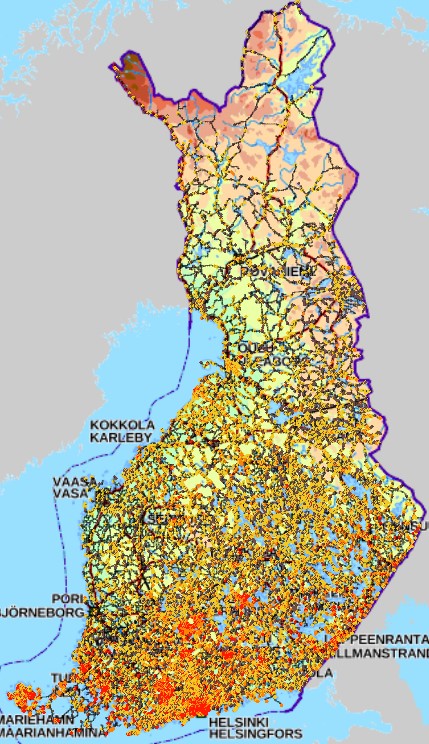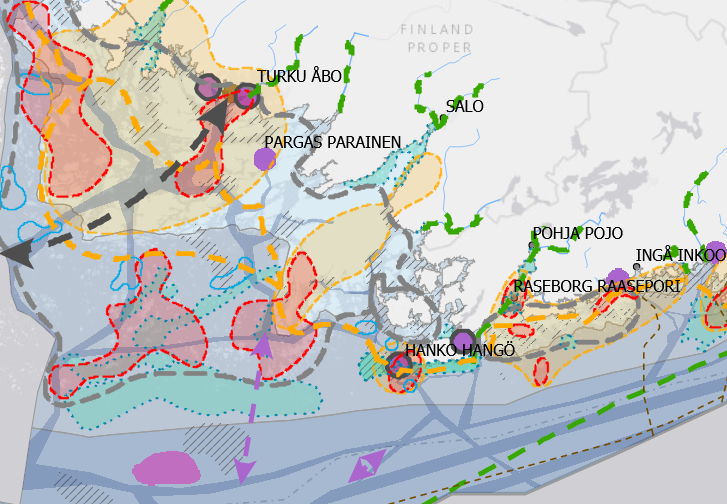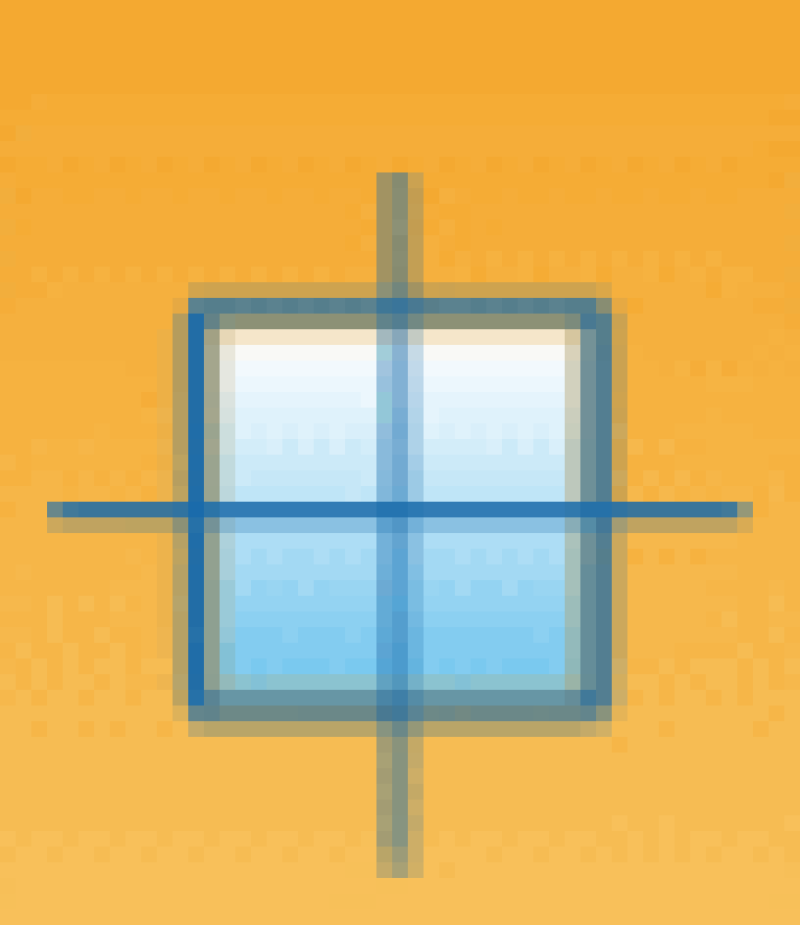Type of resources
Available actions
Topics
Keywords
Contact for the resource
Provided by
Years
Formats
Representation types
Update frequencies
status
Service types
Scale
Resolution
-

FIN Aineiston tarkoituksena on: -Identifioida tie- ja rata-alueet, joiden varrella esiintyy uhanalaisia ja silmälläpidettäviä lajeja -Identifioida tie- ja rata-alueet, joiden varrella esiintyy hyviä elinvoimaisia niittyindikaattorilajeja (hyönteisten mesi- ja ravintokasveja) -Identifioida tie- ja rata-alueet, joiden varrella esiintyy suojelualueita -Identifioida tie- ja rata-alueet, joiden varrella esiintyy komealupiinia tai kurtturuusua -Identifioida tie- ja rata-alueet, joiden varrella esiintyy komealupiinia tai kurtturuusua uhanalaisten lajien lisäksi -> Löytää herkät alueet ja paikallistaa vieraslajien uhka Tieto esitetään 1 kilometrin ruuduissa. Aineistosta on julkaistu kaksi erillistä versiota. -VaylanvarsienVieraslajitJaArvokkaatElinymparistot_avoin: Avoin versio, jonka lajitietoa on karkeistettu mahdollisista herkistä lajeista johtuen. Aineisto kuuluu SYKEn avoimiin aineistoihin (CC BY 4.0) ja sitä saa käyttää lisenssiehtojen mukaisesti -VaylanvarsienVieraslajitJaArvokkaatElinymparistot_kayttorajoitettu: Alkuperäinen karkeistamaton versio. Tämä versio on vain viranomaiskäyttöön eikä kyseistä aineistoa saa jakaa Aineistosta on tehty tarkempi menetelmäkuvaus https://geoportal.ymparisto.fi/meta/julkinen/dokumentit/VierasVayla_Menetelmakuvaus.pdf sekä muuttujaseloste https://geoportal.ymparisto.fi/meta/julkinen/dokumentit/VierasVayla_VariableDescription.xlsx ENG The purpose of the material is to: -Identify road and rail areas that have nearby observations of endangered and near threatened species -Identify road and rail areas with good meadow indicator plant species -Identify road and rail areas along which there are protected areas -Identify the road and rail areas along which there are observations of Lupinus polyphyllus or Rosa rugosa observations -Identify the road and rail areas along which there are Lupinus polyphyllus or Rosa rugosa observations in addition to sensitive species -> Finds sensitive areas and identify the overall threat of alien species The data is presented in 1-kilometer square grid cells. There are two separate versions of the data. -VaylanvarsienVieraslajitJaArvokkaatElinymparistot_avoin: Open access version, in which its species-related parts have been simplified due to data restriction issues. The material belongs to Syke's open materials (CC BY 4.0) and may be used in accordance with the license terms. -VaylanvarsienVieraslajitJaArvokkaatElinymparistot_kayttorajoitettu: Original version. This version is only for official use and the material in question may not be shared. A more precise description about the data procedures can be found from (In Finnish) https://geoportal.ymparisto.fi/meta/julkinen/dokumentit/VierasVayla_Menetelmakuvaus.pdf Furthermore, all the variables in the data are explained in this bilingual variable description https://geoportal.ymparisto.fi/meta/julkinen/dokumentit/VierasVayla_VariableDescription.xlsx This dataset was updated with the newest species observations on 10/2023 and 11/2024 Process code for this can be found from https://github.com/PossibleSolutions/VierasVayla_SpeciesUpdate
-
FTIA INSPIRE Transport Networks Theme Dataset is a dataset depicting the Transport Networks covering the whole of Finland. It contains the following INSPIRE feature types: Road network, Rail network, Waterway network and Air transport network. The dataset is available via the FTIA INSPIRE Download Service (WFS) for Transport Networks and it can be viewed via the FTIA INSPIRE View Service (WMS) for Transport Networks.
-

Lack of spatial soil data in digital form has been a primary obstacle in establishing European policies on land use and environmental protection. Abundant data on soil characteristics exist in Finland but have been scattered among various sources, making it difficult for authorities to make country-wide presentations and predictions.The objective of the project was to create georeferenced soil map and database according to the instructions of the European Soil Bureau using data from existing databases and collecting some new data. The basis of the work was a geological map of quaternary deposits, which describes the soil at a depth of 1 metrem (parent material) according to the Finnish classification based on the concentration of organic matter and the texture of mineral material. Primary research topics included generalization methodology of soil polygons with GIS technology, calculation of soil characteristics needed in the database and computerizing the existing non-digital soil information. It was proved that aerial geophysics can be used for separation of shallow peats from deep peat soils and muddy soils and other wet areas can be identified. Soil names according to the FAO/Unesco system and the World Reference Base for Soil Resources (WRB-2014) were derived from the soil names of the Finnish soil classification system and geophysical data. Soilscape (Soil Mapping Units) of Finland with WRB-2014 soil classification, intented to be used in European scale e.g to delineate risk areas mentioned in soil framework directive proposal.
-
The EMODnet (European Marine Observation and Data network) Geology project collects and harmonizes marine geological data from the European sea areas to support decision making and sustainable marine spatial planning. The partnership includes 39 marine organizations from 30 countries. The partners, mainly from the marine departments of the geological surveys of Europe (through the Association of European Geological Surveys-EuroGeoSurveys), have assembled marine geological information at various scales from all European sea areas (e.g. the White Sea, Baltic Sea, Barents Sea, the Iberian Coast, and the Mediterranean Sea within EU waters). This dataset includes EMODnet seabed substrate maps at a scale of 1:30 000 from the European marine areas. Traditionally, European countries have conducted their marine geological surveys according to their own national standards and classified substrates on the grounds of their national classification schemes. These national classifications are harmonised into a shared EMODnet schema using Folk's sediment triangle with a hierarchy of 16, 7 and 5 substrate classes. The data describes the seabed substrate from the uppermost 30 cm of the sediment column. Further information about the EMODnet Geology project is available on the portal (http://www.emodnet-geology.eu/).
-
The Finnish Forest Research Institute (Metla) developed a method called multi-source national forest inventory (MS-NFI). The first operative results were calculated in 1990. The first country level estimates correspond to years 1990-1994. Small area forest resource estimates, in here municipality level estimates, and estimates of variables in map form are calculated using field data from the Finnish national forest inventory, satellite images and other digital georeferenced data, such as topographic database of the National Land Survey of Finland. Nine sets of estimates have been produced for the most part of the country until now and eight sets for Lapland. These three themes have been produced for production of the CORINE2006. The products cover the combined land categories forest land, poorly productive forest land and unproductive land. The other land categories as well as water bodies have been delineated out using the elements of the topographic database of the Land Survey of Finland. The original map data can be downloaded from http://kartta.luke.fi/
-
NLS-FI INSPIRE Download Service (WFS) for Cadastral Parcels Theme is an INSPIRE compliant direct access Web Feature Service. It contains the following INSPIRE feature types: BasicPropertyUnit, CadastralParcel, CadastralBoundary. The service is based on the NLS-FI INSPIRE Cadastral Parcels dataset. The dataset is administrated by the National Land Survey of Finland.
-

A maritime spatial plan is a strategic development document illustrated by a map. Map markings are used to show the values of marine areas and existing activities and potential future sites for new activities and their alternative placement in all of Finland’s marine areas. The plan covers the territorial waters and the Exclusive Economic Zone. The plan is not legally binding, but an assessment of its indirect and direct impacts and effectiveness forms part of the planning process. The administrative authorities of coastal regional councils approved the plan, prepared according to the Land Use and Building Act, between November and December 2020. The councils of coastal regions have prepared the maritime spatial plan in three different parts: Gulf of Finland (Helsinki-Uusimaa Regional Council and Regional Council of Kymenlaakso), Archipelago Sea and Southern Bothnian Sea (Regional Council of Southwest Finland and Regional Council of Satakunta), and Northern Bothnian Sea, Quark and Bothnian Bay (Regional Council of Ostrobothnia, Regional Council of Central Ostrobothnia, Council of Oulu Region and Regional Council of Lapland). The data is suitable for a general-level examination of Finnish marine areas. More information on maritime spatial plan: https://www.merialuesuunnitelma.fi.
-
This dataset represents the integrated assessment of hazardous substances in the Baltic Sea in 2011-2016, assessed using the CHASE tool (https://github.com/helcomsecretariat/CHASE-integration-tool). The integration is based on hazardous substances core indicators covering concentrations of hazardous substances. This dataset displays the result of the assessment in HELCOM Assessment unit Level 3 (Division of the Baltic Sea into 17 sub-basins and further division into coastal and offshore areas). Attribute information: "HELCOM_ID" = ID of the HELCOM scale 3 assessment unit "country" = Country/ opensea "level_3" = Name of the HELCOM scale 3 assessment unit "area_km2 = Area of the HELCOM scale 3 assessment unit "AULEVEL" = Scale of the assessment units "coastal" = Code of scale 3 HELCOM assessment unit "Input" = Contamination ratio of the assessment unit (Higher score indicates higher contamination) "Confidence" = Confidence of the assessment (Low/ Moderate/ High/ Not assessed) "Status" = Status value for the assessment (= 1.0: Low contamination score, > 1.0: High contaminantion score)
-
WFS download service for EMODnet Seabed substrate dataset: EMODnet Seabed substrate multiscale 1:1 000 000 –Europe (Seabed_substrate:multiscale_1m), EMODnet Seabed substrate multiscale 1:250 000 –Europe (Seabed_substrate:multiscale_250k), EMODnet Seabed substrate multiscale 1:100 000 –Europe (Seabed_substrate:multiscale_100k), EMODnet Seabed substrate multiscale 1:50 000 –Europe (Seabed_substrate:multiscale_50k), EMODnet Seabed substrate 1:100 000 –Europe (Seabed_substrate:seabed_substrate_100k), EMODnet Seabed substrate 1:250 000 –Europe (Seabed_substrate:seabed_substrate_250k), EMODnet Seabed substrate 1:1 000 000 –Europe (Seabed_substrate:seabed_substrate_1m), EMODnet Sedimention rates –Europe (Seabed_substrate:sedimentation_rates). The service is based on the EMODnet Geology dataset. The dataset is administrated by the Geological Survey of Finland. The service contains all features from the dataset that are modelled as polygons.
-
The raw materials of forest chips are small-diameter trees from thinning fellings and logging residues and stumps from final fellings. The harvesting potential consists of biomass that would be available after technical and economic constraints. Such constraints include, e.g., minimum removal of energywood per hectare, site fertility and recovery rate. Note that the techno-economic potential is usually higher than the actual availability, which depends on forest owners’ willingness to sell and competitive situation. The harvesting potentials were estimated using the sample plots of the 12th national forest inventory (NFI12) measured in the years 2014–2018. First, a large number of sound and sustainable management schedules for five consecutive ten-year periods were simulated for each sample plot using a large-scale Finnish forest planning system known as MELA (Siitonen et al. 1996; Hirvelä et al. 2017; http://mela2.metla.fi/mela/tupa/index-en.php). MELA simulations consisted of natural processes and human actions. The ingrowth, growth, and mortality of trees were predicted based on a set of distance-independent tree-level statistical models (e.g. Hynynen et al. 2002) included in MELA and the simulation of the stand (sample plot)-level management actions was based on the current Finnish silvicultural guidelines (Äijälä et al. 2014) and the guidelines for harvesting of energy wood (Koistinen et al. 2016). Future potentials were assumed to materialize when the industrial roundwood fellings followed the level of maximum sustained yield (79 mill. m3 in this calculation). The maximum sustained yield was defined such that the net present value calculated with a 4% discount rate was maximized subject to non-declining periodic industrial roundwood and energy wood removals and net incomes, and subject to the saw log removal remaining at least at the level of the first period. There were no constraints concerning tree species selection, cutting methods, age classes, or the growth/drain ratio in order to efficiently utilize the dynamics of forest structure. The potential for energywood from thinnings was calculated separately for all the energywood from thinnings (Stemwood for energy from thinnings) and for material that does not fulfill the size-requirements for pulpwood (Stemwood for energy from thinnings (smaller than pulpwood-sized trees)). Note that the decision whether pulpwood-sized thinning wood is directed to energy or industrial use, is based on the optimisation by MELA. The minimum top diameter of pulpwood in the calculation was 6.3 cm for pine (Pinus sylvestris) and 6.5 cm for spruce (Picea abies) and broadleaved species (mainly Betula pendula, B. pubescens, Populus tremula, Alnus incana, A. glutinosa and Salix spp.). The minimum length of a pulpwood log was assumed at 2.0 m. Energywood could be harvested as whole trees or as delimbed. The dry-matter loss in the supply chain was assumed at 5%. The potentials for logging residues and stumps were calculated as follows: The crown biomass removals of clear fellings were obtained from MELA. According to harvesting guidelines for energywood (Koistinen et al. 2016) mineral soils classified as sub-xeric (or weaker) and peatlands with corresponding low nutrient levels were left out from the potentials. Next, technical recovery rates were applied (70% for logging residues and 82-84% for stumps) (Koistinen et al. 2016; Muinonen et al. 2013). Finally, a dry-matter loss of 20% and 5% was assumed for residues and stumps, respectively. The techno-economical harvesting potentials were first calculated for nineteen Finnish regions and then distributed on a raster grid at 1 km × 1 km resolution by weighting with Multi-Source NFI biomasses as described by Anttila et al. (2018). The potentials represent time period 2026-2035 and are presented as average annual potentials in solid cubic metres over bark. References Äijälä O, Koistinen A, Sved J, Vanhatalo K, Väisänen P. 2014. Metsänhoidon suositukset. [Guidelines for sustainable forest management]. Metsätalouden kehittämiskeskus Tapion julkaisuja. Anttila P., Nivala V., Salminen O., Hurskainen M., Kärki J., Lindroos T.J. & Asikainen A. 2018. Regional balance of forest chip supply and demand in Finland in 2030. Silva Fennica vol. 52 no. 2 article id 9902. 20 s. https://doi.org/10.14214/sf.9902 Hirvelä, H., Härkönen, K., Lempinen, R., Salminen, O. 2017. MELA2016 Reference Manual. Natural Resources Institute Finland (Luke). 547 p. Hynynen J, Ojansuu R, Hökkä H, Salminen H, Siipilehto J, Haapala P. 2002. Models for predicting the stand development – description of biological processes in MELA system. The Finnish Forest Research Institute Research Papers. 835. Koistinen A, Luiro J, Vanhatalo K. 2016. Metsänhoidon suositukset energiapuun korjuuseen, työopas. [Guidelines for sustainable harvesting of energy wood]. Tapion julkaisuja. Muinonen E., Anttila P., Heinonen J., Mustonen J. 2013. Estimating the bioenergy potential of forest chips from final fellings in Central Finland based on biomass maps and spatially explicit constraints. Silva Fennica 47(4) article 1022. https://doi.org/10.14214/sf.1022. Siitonen M, Härkönen K, Hirvelä H, Jämsä J, Kilpeläinen H, Salminen O et al. 1996. MELA Handbook. 622. 951-40-1543-6.
 Paikkatietohakemisto
Paikkatietohakemisto